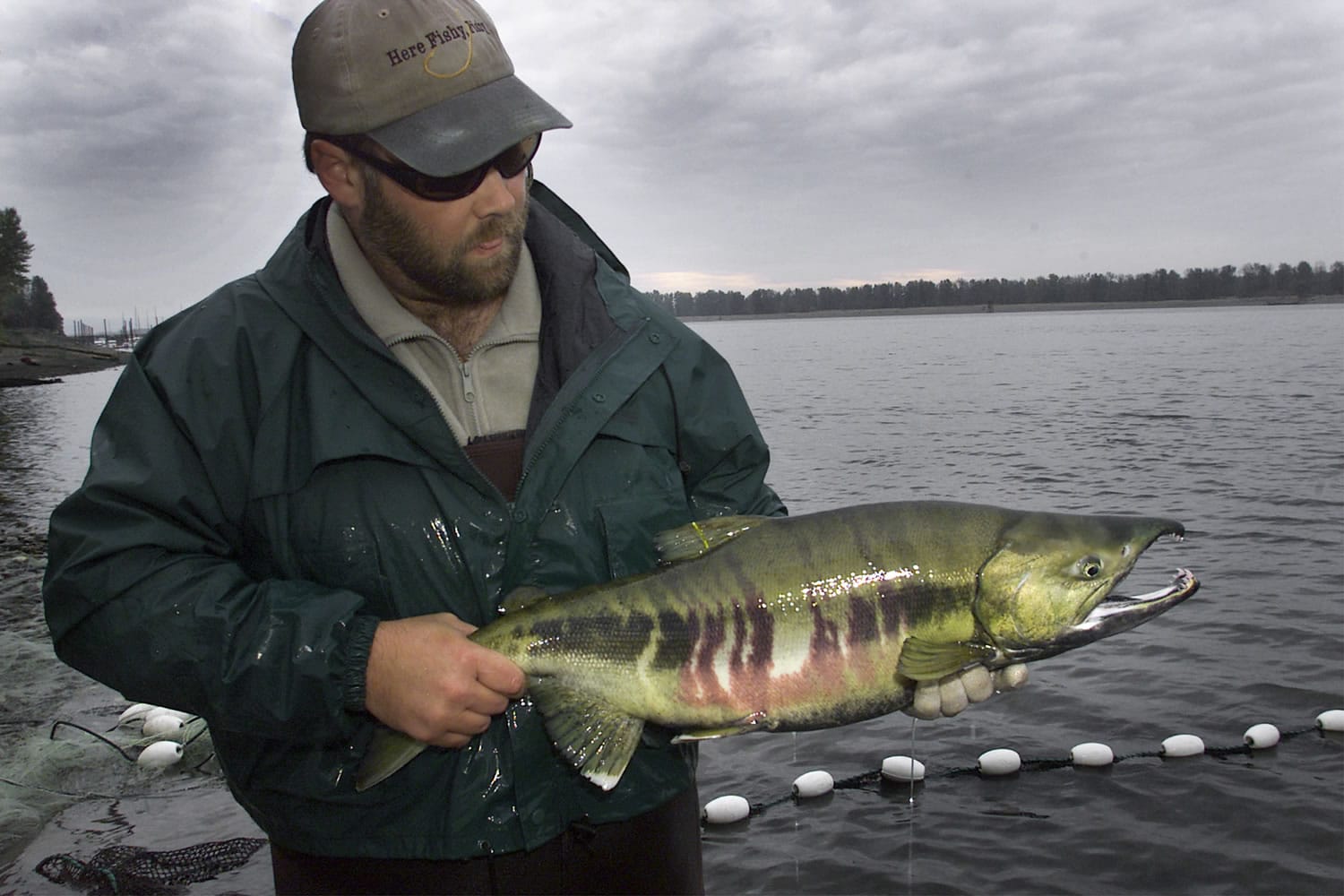The quest to rebuild runs of ugly chum has spread to a new Southwest Washington river.
The Department of Fish and Wildlife recently released 105,000 juvenile chum into the East Fork of the Lewis River.
The chum fry, each about two inches long, are part of an effort to restore a salmon species that once returned to the Columbia River by the millions, but is now at risk of extinction.
Fishery managers expect that about 500 of the juvenile fish will return to the East Fork as adults over the next three to five years. Currently, the entire Lewis River system attracts only about 50 spawning chum each year, compared to historical returns upwards of 100,000, said Todd Hillson, a state fish biologist.
“We have a long way to go to rebuild this run, but this is where it starts,” Hillson said in a news release. Eventually, as returns increase, state biologists hope to build sustainable chum salmon populations in the East Fork Lewis and the rest of the Columbia River basin.
The fry release is part of a long-term recovery project for chum initiated by WDFW in the late 1990s with financial support from the Bonneville Power Administration. Similar projects are already underway on the Grays River and at Duncan Creek, a small tributary near Bonneville Dam.
On the Grays, the annual chum return has ranged from 3,000 to nearly 17,000 fish in the past decade. About 90 percent of the run in the Grays is wild, but WDFW does raise hatchery chum there as a safety net.
The Oregon Department of Fish and Wildlife also launched a reintroduction project for chum salmon on Big Creek, west of Clatskanie, last year with eggs provided from the Grays River chum program.
Fishery managers attribute the decline of chum salmon in the lower Columbia River to overfishing in the early 1900s and losses in spawning and rearing habitat from diking, dam construction and other developments.
After years of dwindling runs, chum were listed as “threatened” in the lower Columbia River under the federal Endangered Species Act in 1998.
Hillson said that with chum projects on the Grays and near Bonneville, the Department of Fish and Wildlife wanted to bring the fish back to a river located roughly between those locations — such as the East Fork Lewis.
For the new project on the East Fork, juvenile chum were reared for approximately six weeks at the Lewis River Hatchery. Those juvenile fish are the offspring of 111 adult chum that returned to spawn on the Columbia River near the Interstate 205 Bridge.
“We chose those fish because that run has the greatest genetic similarity to native Lewis River chum,” Hillson said. “In addition, returns to that area are large enough to sustain the loss of those fish.”
Hillson said releasing juvenile fish is the “fun part” of salmon restoration. Before any fish are actually released, state employees and volunteers often work for weeks to restore spawning channels and other habitat the salmon need to survive.
Hillson described the spawning channels built as “kind of a cross between a hatchery raceway and a stream.” In some cases, sediment had to be removed to restore the connection to spring water that chum favor.
Over the years, workers will keep an eye on the river shorelines because “chum have a nasty habit of digging into the banks,” he said. The fish can dig 6 feet into a bank over the years.
“Rearing and spawning habitat is probably the greatest limitation we face in restoring chum salmon in the Lewis River and the lower Columbia,” Hillson said. Though chum fishing was curtailed decades ago, “the chum never really came back because so few places were left for them to successfully spawn.”
That will not be the case with the chum fry released last week.
Approximately 95,000 of those fish were released just below a spawning channel designed and built on the East Fork Lewis River by Fish First, a local salmon-recovery group. Dean Swanson, who serves on Fish First’s board of directors and owns the property, has been active in many of the group’s other restoration projects for salmon and steelhead in the Lewis Basin.
The remaining 10,000 fry were released into Mill Creek, a tributary of the East Fork Lewis River, from property owned by Dave Brown, who operates a rescue facility for wild fish. Brown and his team of volunteers specialize in rescuing outmigrating salmon and steelhead at risk of becoming stranded in shallow water.
The first chum adults from this month’s release are expected to return in 2014, with more following the next year, Hillson said. When they do, fishing regulations shouldn’t change on the East Fork, where fishing is allowed for steelhead but not for any species of salmon.
While chum have less value to freshwater fisheries than other salmon species, they have played a historic role in the ecology of the Columbia River Basin, said Bryce Glaser, another WDFW fish biologist.
“Chum salmon once carried massive amounts of nutrients from the ocean up the Columbia River, where their carcasses benefit the stream, the soil and other fish and wildlife,” he said. “Our goal is to rebuild these runs and regain the ecological benefits they bring with them.”
The department plans to build another chum spawning channel on the North Fork Lewis near Eagle Island next year, Hillson said. The agency is also scouting the Elochoman River and Skamokawa Creek for chum habitat.



